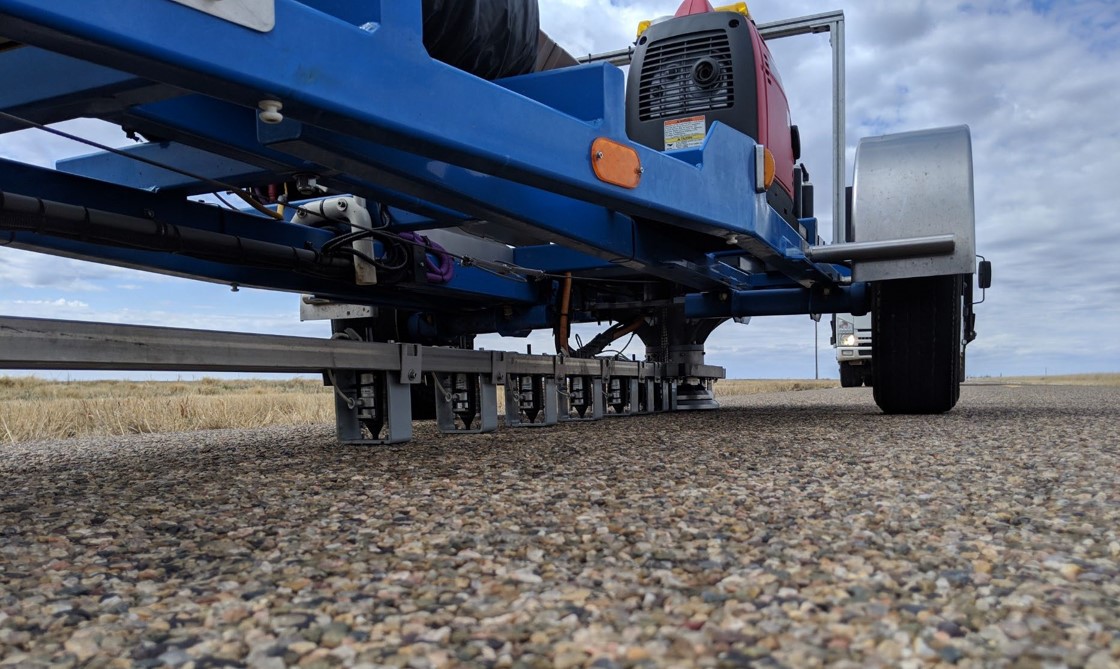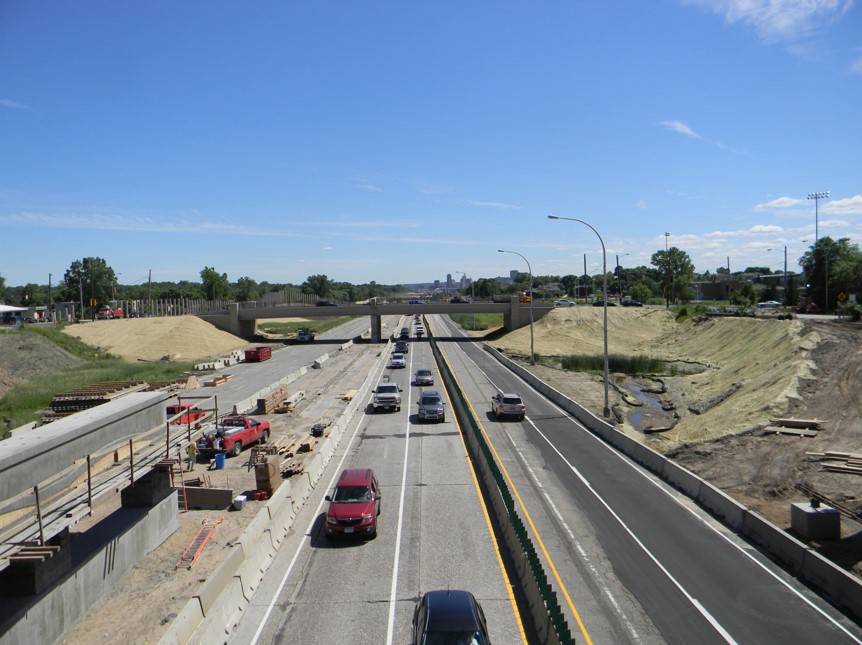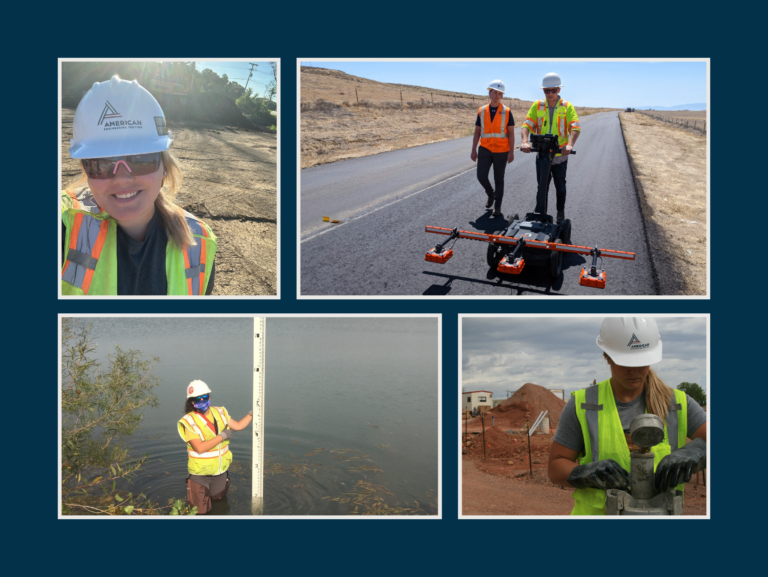Pavement investigations help determine whether temporary pavement sections will hold up to anticipated traffic loads….
BY JACOB MICHALOWSKI, PE
When construction is planned along sections of high-volume roadways, AET consultants, contractors, designers, and transportation agency staff come together to develop effective solutions for keeping traffic and emergency vehicles moving smoothly.
One of the great challenges of construction on high-volume roadways is managing the flow of vehicles. Multiple lanes of highway traffic are often reduced to two lanes, which are then shifted onto temporary pavement, such as existing shoulders, so construction activities can be completed on the mainline pavement.
These existing pavement sections, however, may not have been designed to carry a high volume of traffic or the heavy loads that will be imposed upon them. It is important for the team to raise the question of whether, even for a short period of time, the pavement sections under consideration will hold up to the new traffic loads.
Pavement failure contributes to project delays
On many roadways there is a real risk that the existing pavement used to carry the temporary traffic could fail. If a pavement does fail, traffic flow would need to be adjusted, again — restricting traffic to fewer lanes, possibly only one – causing major delays for the traveling public and emergency response vehicles. These delays cost time, money, and can delay the overall project schedule.
Our Pavement and Infrastructure staff always recommend an evaluation of temporary pavement sections during the project planning stage — to establish the strength of the pavement to carry the anticipated traffic loading during construction.
When it comes to pavement – how strong is strong?
A roadway’s strength is determined by the properties of the subsurface structure, aggregate base layers, and pavement surfacing.
To determine if the existing pavement section can actually withstand the expected loads, a thorough historical review and pavement investigation are recommended. The scope of the evaluation relates to how much risk the agency and the contractor are willing to assume.
Review of historic road plans tells part of the story
A review of historical plans from the original roadway construction will reveal how the pavement section was designed. Confirming that the design was sufficient for the anticipated loads, however, is only part of the story. During the original construction, layer thicknesses and material quality can vary. The pavement strength that was supposed to be there, may not be. This is why a pavement investigation is also critical to assess the risk of putting high traffic volumes on existing pavement that it was likely not designed for.
Pavement investigations include nondestructive testing (NDT) methods
One economical technology that AET often uses to investigate the strength of pavement, base, and subgrade is the falling weight deflectometer (FWD), a nondestructive testing device. Mounted to a trailer, the FWD is attached to a pick-up truck which stops and tests the pavement at specified intervals. A review of testing data can quickly identify pavement at risk of failing under the anticipated higher loads. Typically used in conjunction with the FWD, ground penetrating radar (GPR) is another tool that scans the pavement surface, in this case to determine the depth of the pavement surfacing and aggregate base layers.

Street view of falling weight deflectometer (FWD)
When weak stretches of pavement are identified, AET staff can recommend the proper strengthening methods that will increase the load carrying capacity of the pavement layers, so they will be able to sustain the temporary traffic loadings. This will allow the contractor to safely shut down other mainline lanes for construction activities.
By implementing a full review and investigation of the pavement slated for use during construction, including the use of pavement testing technology such as FWD and GPR testing, AET can help the team of contractors, designers, and the agency reduce the risk of pavement failure in the temporary lanes.
Jacob Michalowski works in the Pavement Group at our St Paul office. He can be reached at jmichalowski@teamAET.com



